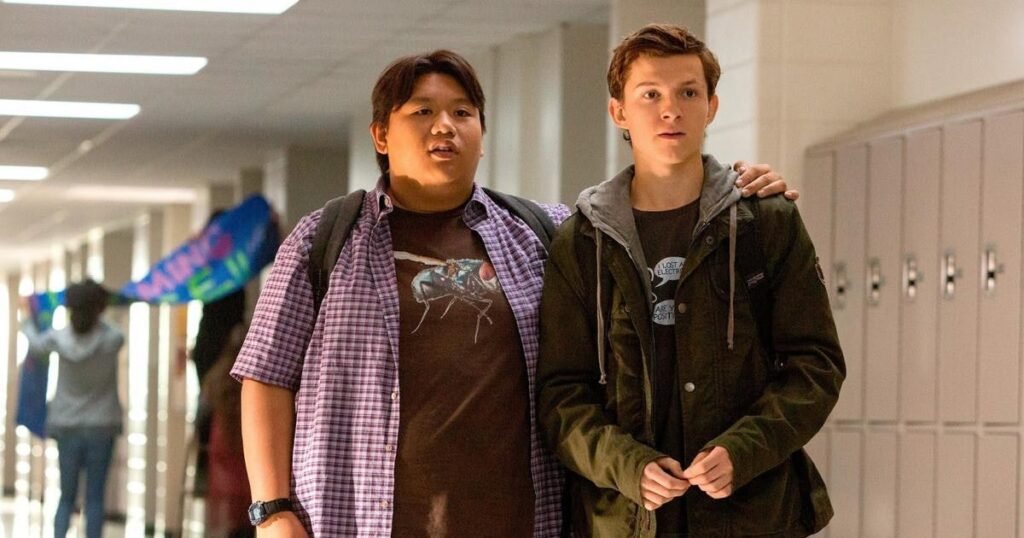Along with the romanticization of abusive relationships, the death of main characters for the “shock” factor, and blurred morality, the “model minority” trope joins the list of tropes to be hated. Often serving as a proxy for Asian American representation in the Hollywood film industry, this trope is in some of the most-loved films by American audiences, even Tom Holland’s takes on the Spider-Man franchise.
The Hollywood film industry has had a role in consistently confining Asians and Asian Americans to stereotypes, from Yellow Peril to the model minority stereotype. The applauded industry is home to numerous films depicting Asians as evil to align with the Yellow Peril, a racial color metaphor depicting east Asian peoples as a threat to the West dating back to 1895. And ever since World War II and the resulting prevalence of propaganda supporting the model minority stereotype, it’s now also home to numerous modern films that confine Asian American characters to fit the connotations of the stereotype that has played an extensive role in the struggles of marginalized communities, from mental health to excusing racism.
The model minority stereotype, which implies that all Asian Americans are successful, intelligent, hard-working, and law-abiding, has led filmmakers to often emphasize the affluence and academic success of Asian American characters rather than their complexities and problems. According to The Sociological Cinema, “to this day, iterations of [Hollywood’s insistent portrayal of Asian Americans as stereotypically smart characters] can be seen in modern film through characters like Data from The Goonies (1985) and Takashi Toshiro from Revenge of the Nerds (1984), [feeding off of and reinforcing these biases].” An even more recent example of this, as stated by Khanhlinh Le, a University of San Francisco graduate with a master’s degree in Asia Pacific Studies, “is Spider-Man: Homecoming (2017). In this … Spiderman movie from the Marvel Cinematic Universe, Peter Parker’s best friend Ned is a nerdy Asian boy who is a science aficionado that loves gaming and hacking.” Though Ned is a fan-favorite and a comical character, he does play into the “model minority” trope quite a bit, with his characterization having roots in his gifted abilities for technology and science.
In truth, Asian depictions are often limited to either being “smart, hopelessly nerdy guys with a knack for technology” like Ned or “funny foreigners who speak broken English,” as supported by the wiki website TV Tropes. Though these characterizations may seem harmless, they are impactful, as the media can affect our perceptions extensively and subconsciously. Both researchers at Harvard and Ohio State Universities and the Kirwan Institute have found a correlation between the media and our subconscious judgments, as well as how the media can cause us to develop implicit associations between groups and stereotypes/biases over time. So, when films portray Asian Americans as people without personality traits besides those contained within the model minority stereotype, they spread the message that the model minority stereotype pertains to all instances, perpetuating a harmful stereotype and creating a false representation of a minority that has already been subject to too much false propaganda for the advantage of others.
Statistics from “I Am Not a Fetish or Model Minority: Redefining What it Means to Be API in the Entertainment Industry,” a report brought about by the Geena Davis Institute on Gender in Media and the Coalition of Asian Pacifics in Entertainment and Gold House, state that 35.2% of API characters embody at least one common API trope or stereotype, including the “model minority” trope, also shown by the higher likelihood of API characters being written as smart and hard-working than funny. In retort, “the majority of respondents recruited by CAPE do not have a positive view of the state of API representation; 93.3% agree that API representation on screen is inadequate, and 95.1% agree that API representation behind the scenes is inadequate.”
With the lack of proper representation of Asian Americans (with most characters not even accounting for the input of Asian Americans), films including the stoner comedy Harold and Kumar Go to the White Castle (2004) and crime drama Better Luck Tomorrow (2002) are greatly appreciated. These films are some of the few that helped counteract the predominance of the depictions of the model minority stereotype by showing characters that did not perfectly align with the model minority stereotype and had personalities outside of it. Rather than having characters defined by the model minority stereotype, the Hollywood film industry should instead focus on writing Asian American characters who are complex, display individuality, and cannot just be reduced to the words “smart and hard-working.” Essentially, it’s okay for Asian American characters to be intelligent, but it’s not okay for them to just be intelligent. Thank you for reading this article, and stay tuned for further articles regarding the model minority stereotype <3
Works Cited
“Analysis/Race Tropes.” TV Tropes, https://tvtropes.org/pmwiki/pmwiki.php/Analysis/RaceTropes.
I Am Not a Fetish or Model Minority: Redefining What It Means to Be API in the Entertainment Industry. Geena Davis Institute on Gender in Media, Coalition of Asian Pacifics in Entertainment and Gold House, 5 Oct. 2022, https://seejane.org/.
Le, Khanhlinh. Hollywood Media and the Model Minority Myth: the Representation of Asian American Masculinity and Its Effects. The University of San Francisco, 15 May 2020, https://repository.usfca.edu/cgi/viewcontent.cgi?article=2214&context=capstone.
Y. Gbadamosi. “ Tracking the Model Minority Trope in Hollywood Film.” The Sociological Cinema, The Sociological Cinema, 9 Dec. 2019, https://www.thesociologicalcinema.com/blog/tracking-the-model-minority-trope-in-hollywood-film.
